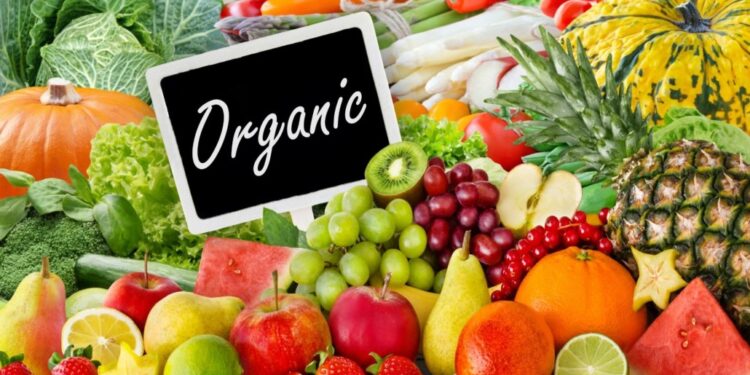The global organic food market is forecasted to grow from $160.40 billion in 2024 to a remarkable $472.72 billion by 2033, reflecting a compound annual growth rate (CAGR) of 12.76% during 2025–2033. This surge is driven by rising consumer demand for natural and environmentally sustainable products that promote holistic well-being.
Market Dynamics and Key Trends
The organic food market is experiencing rapid growth in farmland dedicated to organic agriculture. For instance, Germany reported 1.8 million hectares devoted to organic farming, while the U.S. Department of Agriculture issued 520 new organic livestock certifications this year, showcasing increasing demand for ethically sourced products. While fruits and vegetables dominate the market, cereals and dairy products are gaining traction due to evolving dietary preferences.
Prominent players are capitalizing on this momentum. Arla Foods launched eight organic dairy products across Europe, and Nestlé introduced three organic baby food lines aimed at health-conscious parents globally. India has expanded its organic farming footprint to 2.6 million certified farms, while Canada imported over 790,000 metric tons of organic produce, highlighting growing urban demand.
Global Leaders Driving Innovation
Major companies are reshaping the organic food landscape. Danone unveiled five organic plant-based yogurt options for the Middle East in 2023, and Brazilian cooperatives processed 460,000 metric tons of rainforest-friendly products, balancing sustainability with community welfare. Countries like Japan and Switzerland lead in per-capita organic food consumption, with Japan’s specialty teas and rice and Switzerland’s fresh produce gaining widespread popularity.
Advancements in pesticide-free technology have led to 40 new greenhouse innovation patents across Asia, while France introduced 22 new policies to support local organic clusters. These developments reinforce the global shift toward sustainable food systems.
Organic Food Market: Key Insights
| Metric | Details |
| Market Forecast (2033) | $472.72 billion |
| CAGR | 12.76% |
| Largest Region (2024) | North America (47.83%) |
| Key Product | Dairy Products (24.66%) |
| Key Form | Fresh (48.74%) |
| End Users | Household (82.24%) |
| Top Distribution Channel | Offline (84.26%) |
Category Highlights
Dairy Products: A Key Market Segment
Dairy products account for 24.66% of the organic market, driven by consumer trust and innovation. In 2024, Arla Foods introduced four new organic milk products featuring probiotics, and Horizon Organic expanded to over 220 retail locations in the U.S. The European Union certified 12 Italian dairy cooperatives for their zero-chemical practices, while Australian exports of organic cheese to Southeast Asia surpassed 18,000 metric tons. These trends underline dairy’s central role in organic market growth.
Fresh Organic Foods: Dominating Consumer Preferences
Fresh organic produce, comprising 48.74% of the market, remains a consumer favorite. Spain exported over 950,000 metric tons of organic tomatoes and peppers to Northern Europe, while Peru harvested 700,000 metric tons of organic avocados for North America. Innovative policies, such as California’s tax rebates for seed-to-store transparency and India’s mobile collection points in Sikkim, highlight efforts to enhance fresh organic supply chains.
Residential Consumers: Market Drivers
Residential buyers account for 82.24% of organic food consumption. In the UK, monthly subscriptions for organic food delivery boxes reached 880,000, while Malaysia recorded 65,000 new cooperative memberships. Cities in Australia incentivized organic purchases with compostable packaging rewards, and California introduced 18 pilot programs to link consumers with small-scale farms, fostering a robust connection between producers and buyers.
Innovations Shaping the Future
Cutting-edge technology and partnerships are transforming the organic food market. In the Netherlands, robotic systems optimize greenhouse conditions, while Finland’s startups are advancing drone-based pest detection. Improved logistics, such as Norway’s temperature-controlled shipping vessels, enhance organic product quality during transport.
Collaborations are equally impactful. New Zealand’s agricultural centers piloted low-impact irrigation, India promoted biodynamic soil rejuvenation, and France implemented blockchain traceability in retail chains. These efforts collectively bolster the organic food market’s infrastructure and accessibility, ensuring sustainable growth.
Conclusion
The organic food market is evolving into a robust, globally influential sector. With innovations in farming, logistics, and policy support, it is poised to surpass $472 billion by 2033. This transformation reflects a widespread commitment to sustainability, health, and consumer empowerment, paving the way for a healthier and more sustainable future.






















































